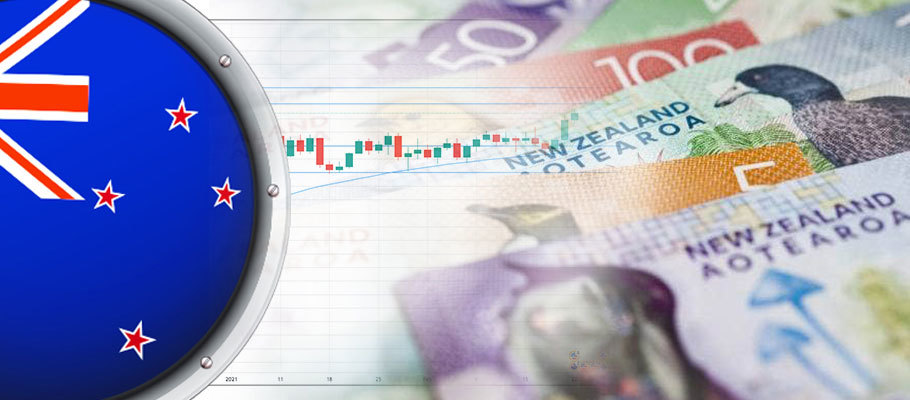
Published: February 25th, 2021
The New Zealand dollar kicked off the trading week with considerable gains, picking up where it left off the previous Friday. On Tuesday, NZD/USD was trading at 0.7327, up more than 0.45 per cent on the day. The upward moves come off the back of a 1.02 per cent gain seen last week when the pair delivered its highest one-day gain since the start of the year.
The kiwi benefited from slumping US yields as it rallied robustly, adding to its gains again when S&P Global raised the country’s sovereign rating from AA to AA+ on Monday.
S&P said it was the first ratings upgrade it had given any country since the coronavirus pandemic began. Its announcement said that New Zealand’s economy had bounced back faster than other developed countries, owing to the better job Auckland has done keeping Covid in check. The agency did note two areas of concern in the Kiwi economy: high household debt and potential weakening in the housing market.
Nonetheless, S&P's rating boost pushed the New Zealand dollar up. That’s good news for the country’s central bankers, who want to attract new global investors for their ongoing programme of government bond sales.
In a statement announcing the rating upgrade, S&P said, ‘New Zealand is recovering faster than other Western economies because of its success in containing COVID-19’s spread. Our analysts have more clarity over the pandemic’s impact on government balance sheets. It’s our belief that Auckland’s credit metrics can hold up against any future negative shocks to the economy. These could come from potential softness in the residential real estate market, or degradation of its fiscal position.’
S&P’s decision would have been influenced in part by New Zealand’s third-quarter retail sales figures, which leapt upward by more than 27 per cent after posting a decline of 14 per cent in the second quarter.
Q4 figures due later in the week are expected to show only a small decline of less than half a percentage point. Core retail sales, which followed a similar pattern as the top-line trend for Q2 and Q3, are forecast for a decline of around 0.6 per cent. While the declines are small, they could cause a pause in NZD’s rally.
The kiwi has also performed well against majors like the British pound. While coronavirus lockdown and worries about Westminster’s tenuous grip on the pandemic continue to weigh on sterling, NZD strengthened.
The pound may be setting up for further losses against NZD next week, depending on how markets interpret the UK’s roadmap and timeline for phasing out lockdown restrictions.
If London is more upbeat than expected about getting rid of commercial restrictions, that could see the pound advance. However, if the UK government’s plans are more cautious than hoped, NZD could benefit.
After weak UK retail sales figures released last week, some analysts believe sterling may be running out of steam. British retail sales had been expected to shrink by 1.2 per cent year-on-year because of the country’s third nationwide lockdown. The actual numbers came in at almost negative six per cent. The monthly numbers were worse, indicating a contraction of more than eight per cent.
Analysts said the retail sales figures shock suggested lockdowns have hammered consumer activity creating bigger negatives than seen in November, the start if the second national lockdown.
The New Zealand Dollar has largely held onto its appeal for FX traders throughout the disruptions of 2020 and 2021, a sign of broad optimism over Auckland’s handling of the COVID-19 pandemic.
Almost from the outset, New Zealand has consistently been more in control of the pandemic than other advanced economies, allowing it to keep most of its economy performing strongly as lockdowns have been fast & decisive, but shorter in duration than those seen elsewhere.
Comparing NZD to GBP is instructive. Sterling’s exchange rate outlook has been hit again and again by investor jitters about the Johnston government’s grip on the pandemic. The latest concerns come as some see the plan to ease the UK from pandemic lockdown in the Spring as too slow.
Prior to the release of the latest roadmap, the pound had been buoyant on speculation that the UK economy would be able to rebound quickly from COVID-19 restrictions by mid-year.
The news this week that lockdown will be phased out over a longer timeline has sullied those hopes and is likely weighing on the pound exchange rate versus the kiwi.
While NZD continues to shine, gaining 1.1 per cent by mid-week and up almost 2.7 per cent for the month of February, the Reserve Bank of New Zealand (RBNZ) has been sending a more cautious message to forex markets. The country’s central bank said this week that ‘extended monetary stimulus’ was required, making it harder to hit employment and inflation targets.
RBNZ stayed the course on interest rates, holding them at 0.25 per cent while maintaining its NZ100 billion programme of quantitative easing (QE). The bank also said it was ready to unleash more monetary stimulus if conditions require it.
New Zealand’s economy has come back strongly from recession in 2020, posting the sort of V-shaped recovery other western economies can only hope for. The labour market is performing well, and inflationary pressures indicate the economy is humming along more or less as it should. RBNZ wants to keep market enthusiasm in check, however, reminding investors that the economic picture remains uncertain thanks to events like the evolving new strains of the COVID-19 virus.
The US Fed has also been dovish in the economic outlook. Recent pronouncements from chairman Powell have served to pour cold water on suggestions that the Fed might be planning to slow its own QE programme. The Fed is committed to an ultra-easy monetary policy, he told a policy meeting last week.